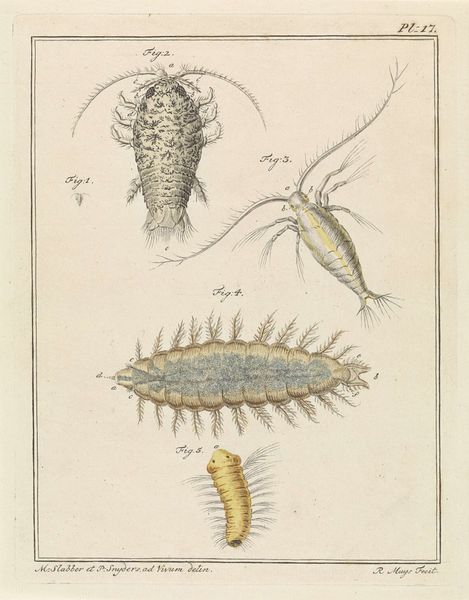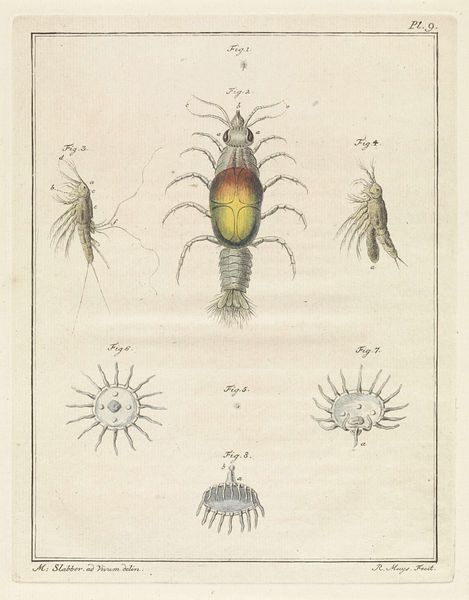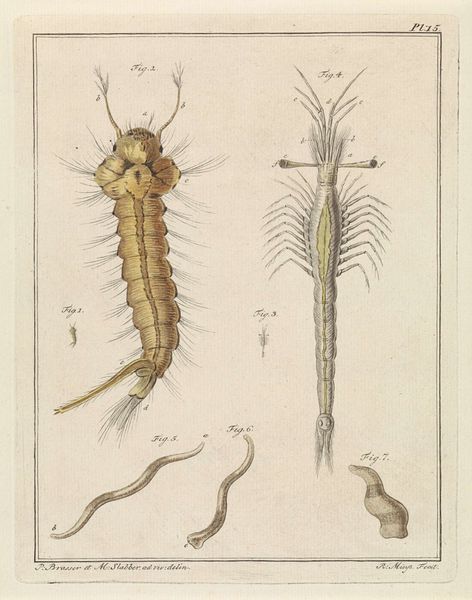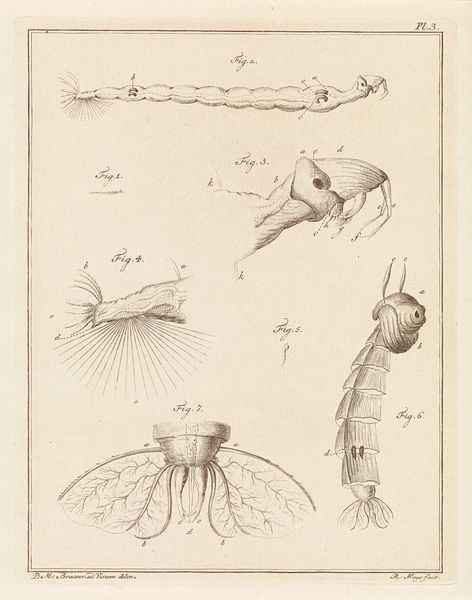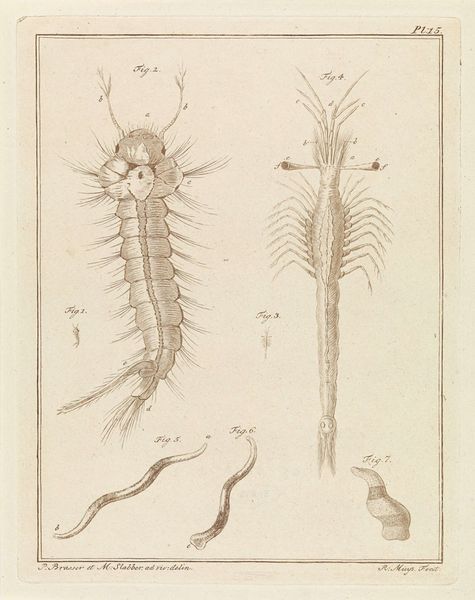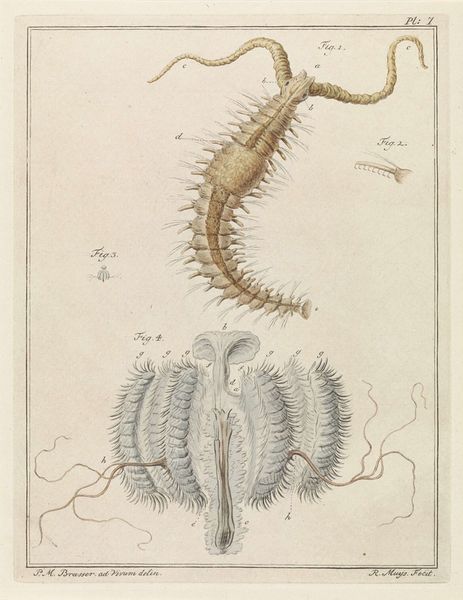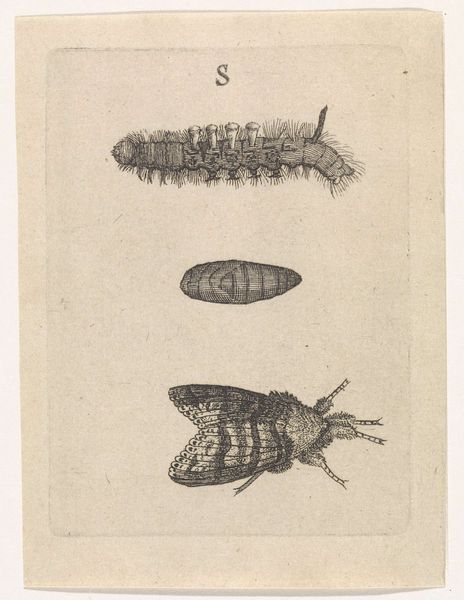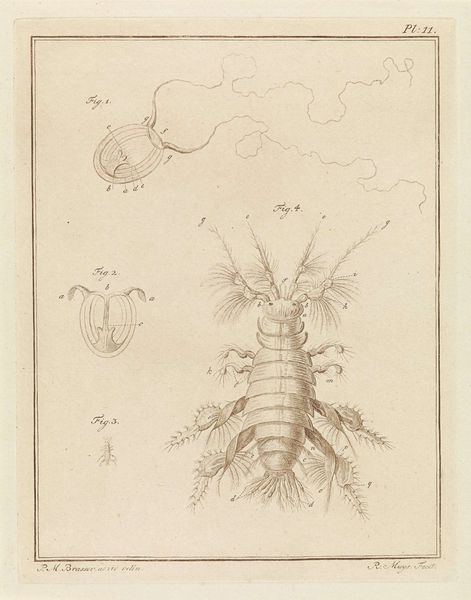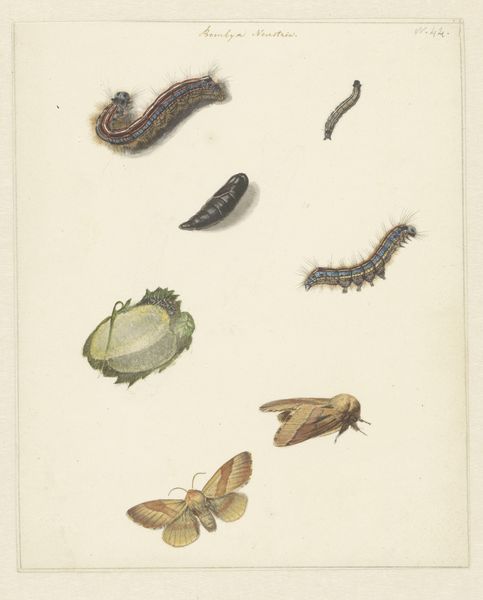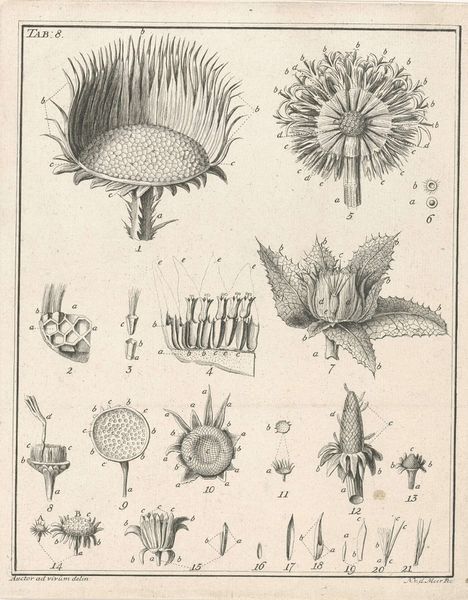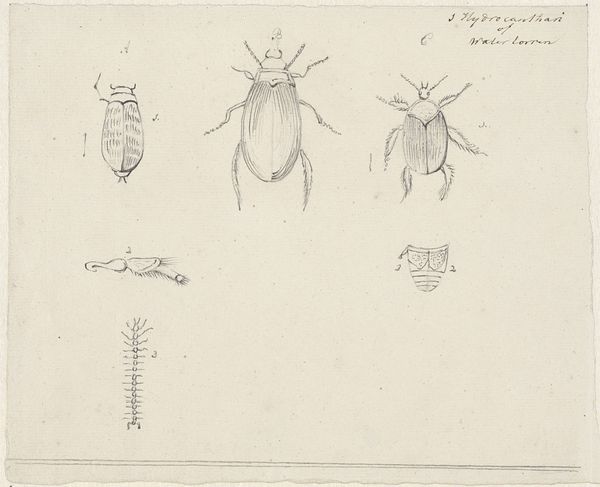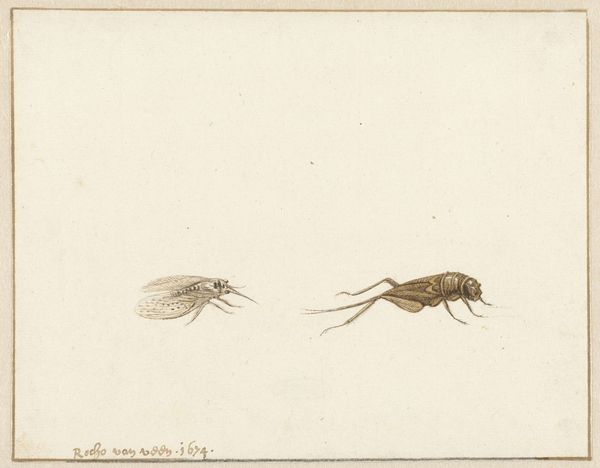
drawing, print, paper, watercolor
#
drawing
# print
#
paper
#
watercolor
#
botanical drawing
#
watercolour illustration
#
botanical art
#
watercolor
Dimensions: height 209 mm, width 162 mm
Copyright: Rijks Museum: Open Domain
Curator: Welcome. We’re looking at "Leptomeduse en een brakwaterpissebed," which translates to "Leptomedusa and a Brackish Water Isopod." Created in 1778 by Robbert Muys, this piece at the Rijksmuseum combines drawing and printmaking techniques on paper with watercolor. Editor: My immediate impression is of almost clinical detachment. The muted colors, the clear delineation of forms… it feels more like a scientific study than an aesthetic exploration. Curator: Precisely. The means of its production underscore that intent. Think about the labor involved in the etching and printing processes, then carefully hand-coloring each print. It’s reproducible knowledge, designed for wide distribution. This wasn’t about creating a singular masterpiece; it was about disseminating information. Editor: Yet, even in its clinical presentation, certain symbols stand out. The jellyfish itself— traditionally linked to concepts of adaptation, change, even resilience in harsh environments, mirroring perhaps the challenges faced by scientific exploration itself during that time. The isopod represents survival, existing in these unique aquatic niches. They echo humanity's tenacity. Curator: I would also emphasize the materiality here. The watercolor washes, delicately applied, create the diaphanous effect of the jellyfish's bell. This careful layering becomes a tactile process where scientific observation transcends mere visual representation. It creates, in effect, its own kind of art. Editor: There's a compelling juxtaposition here—the transient beauty of the jellyfish alongside the hardy, almost armored isopod. This contrast sparks a dialogue. Curator: Ultimately, this is an artifact born of a moment when the lines between scientific inquiry, artistic practice, and artisanal craft blurred. The piece is a reminder that art could inform science just as it also provided it with its visual language. Editor: A lovely demonstration of how science is not absent of creative intent and imagery.
Comments
No comments
Be the first to comment and join the conversation on the ultimate creative platform.
